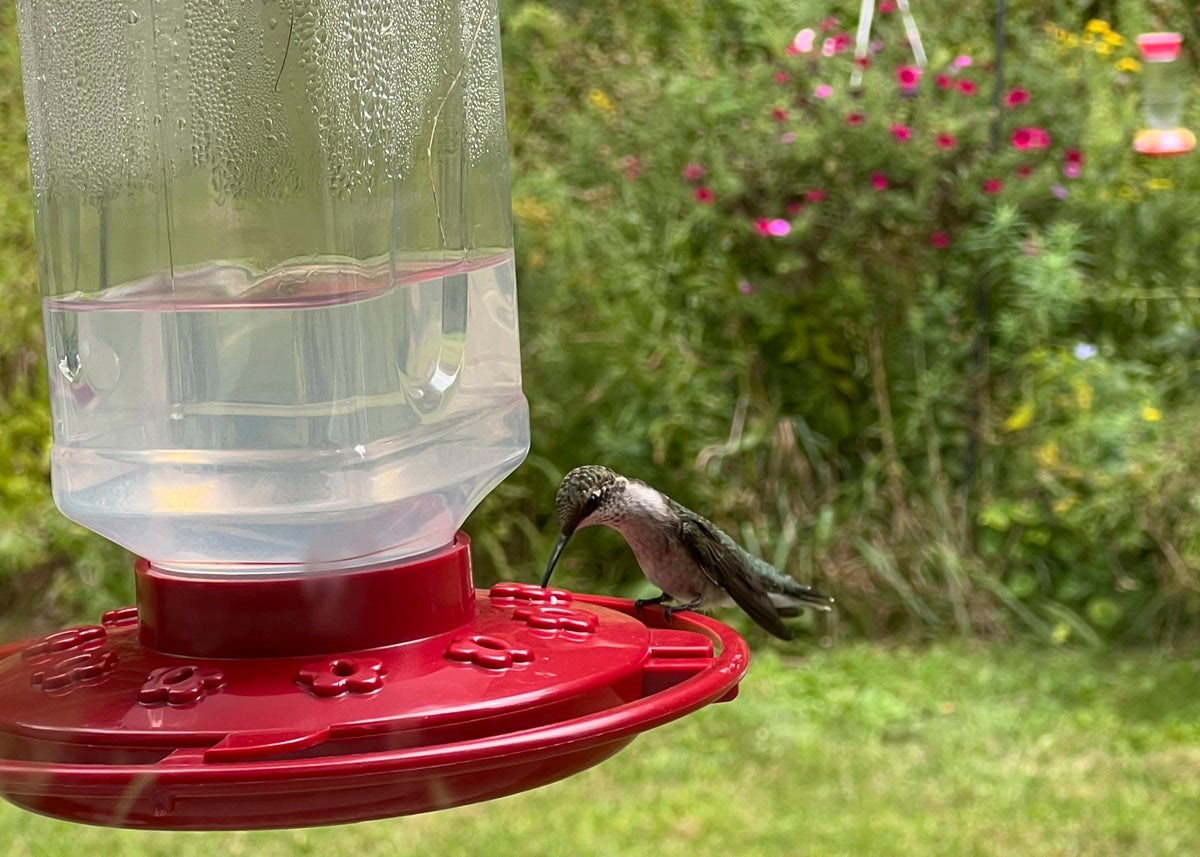
Most of the hummingbirds that visited our gardens over the summer are currently en route to their winter homes in Central America. And the tiny 3-to-5-inch-long birds, which weigh just 0.1 to 0.2 ounces, need plenty of energy to fuel their journey.
High-calorie food is in order, and you can easily whip up a batch for them yourself. The International Hummingbird Society recommends dissolving 1 cup of pure-white cane sugar into 4 cups of water. Do not use so-called “raw” or other nonwhite sugars because they contain molasses, which is high in iron and can be toxic to hummingbirds.
If you prefer, you can buy bottled nectar instead of making your own. You’ll find that many products are dyed red to lure the birds, which have a penchant for bright colors, particularly red. But adding dye to food isn’t necessary or beneficial. I’d rather keep their food pure, so I use clear nectar in a red feeder specially designed for hummingbirds.
Fill the feeder with sugar water or nectar and install it at least 4 feet off the ground. Wash, rinse and dry the feeder twice a week and refill it with just enough of the liquid to last until the next cleaning.
Then, sit back and keep an eye out for your avian visitors, which will appear suspended in the air as they feed. They’ll actually be working very hard to hover in one spot, beating their wings in a figure-eight motion up to 80 times per second.
Hummingbirds will continue to pass through from points north throughout most of the fall. To ensure that late-migrating stragglers get the sustenance they need, keep your feeders in place until three weeks after the last one has visited.
Consider also planting a floral buffet to attract and nourish hummingbirds during summer. They’ll repay you with acrobatic flips, nosedives, backward flight and other amusing activities.
The seemingly nonstop little pollinators don’t walk, so they must beat their wings constantly. As you might imagine, all that exercise works up voracious appetites that require feeding several times per hour year-round.
Hummingbirds are most attracted to red, tubular flowers, such as bee balm (Monarda), hummingbird mint (Agastache), larkspur (Delphinium), penstemon, petunia and zinnia. But purple and white salvia, hosta and catmint are also great hosts.
Columbines (Aquilegia) and lupines (Lupinus) will provide nectar for early returnees next year, so consider planting those spring bloomers, too.
Because plants need a lot of sunlight to produce nectar, they should be placed in the brightest areas of your garden. The more you plant – and the more feeders you install – the better your chances of seeing hummingbirds and their entertaining antics in your garden.
—-
Jessica Damiano writes the award-winning Weekly Dirt Newsletter and regular gardening columns for The AP. Sign up here to get weekly gardening tips and advice delivered to your inbox.
—-
For more AP gardening stories, go to https://apnews.com/search?q=gardening#nt=navsearch







